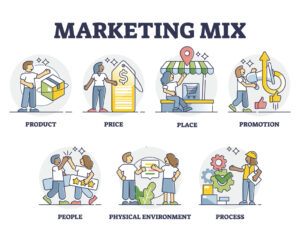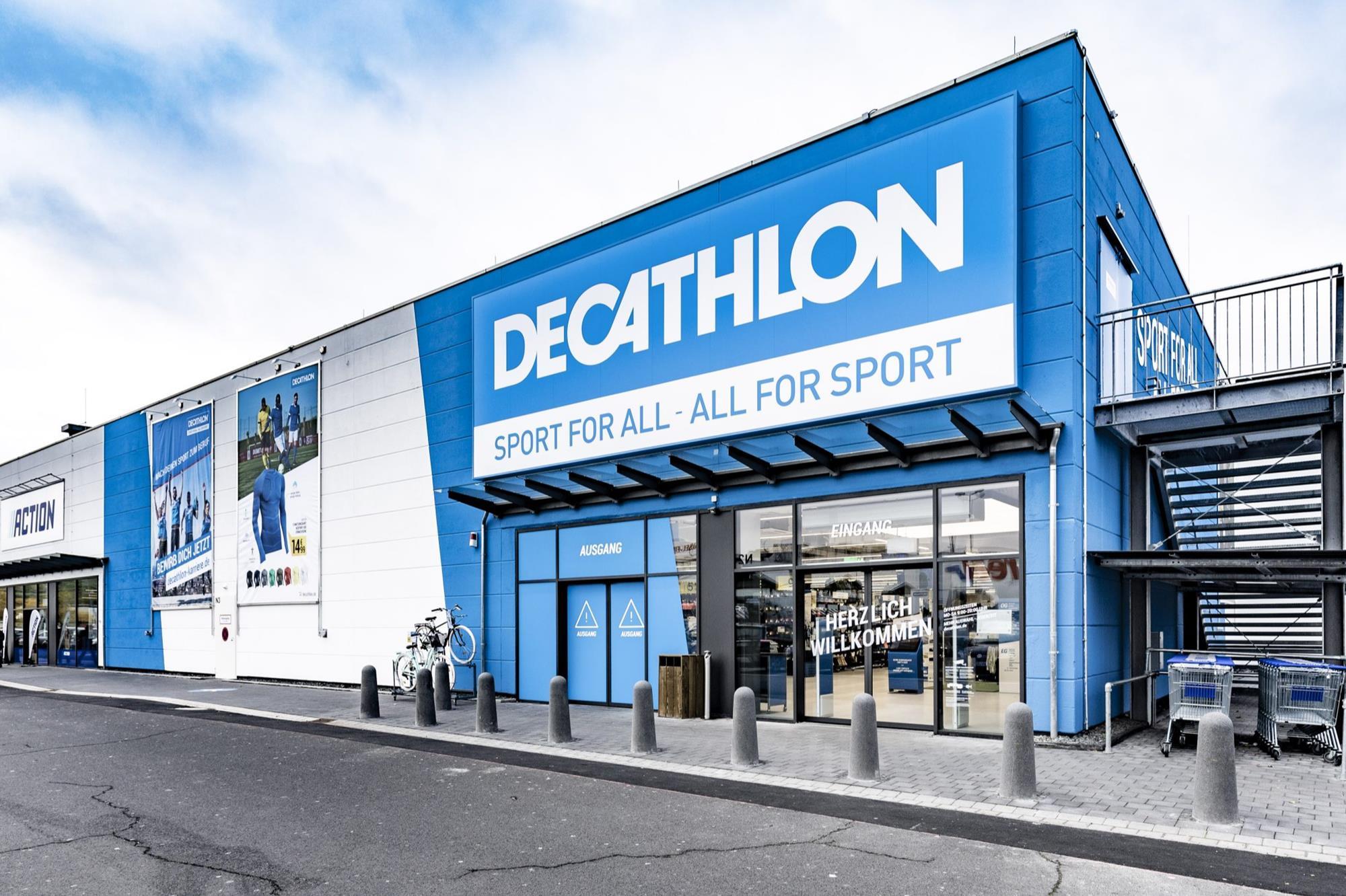Decathlon is a multinational sporting goods retailer and brand headquartered in France. Founded in 1976 by Michel Leclercq, the company has grown to become one of the world’s largest sporting goods retailers. Decathlon operates in over 70 countries and offers a wide range of sports equipment, apparel, and accessories for various sports disciplines.
Decathlon’s mission is to make sports accessible to all by providing affordable and high-quality products. The company follows a vertical integration model, controlling the entire value chain from research and development to production, distribution, and retail. This approach allows Decathlon to offer competitive prices while maintaining control over product quality.
Decathlon’s product range covers a diverse range of sports, including football, basketball, tennis, cycling, hiking, swimming, and many more. The company designs and develops its own products in collaboration with athletes and sports enthusiasts, ensuring that they meet the needs and demands of different levels of athletes, from beginners to professionals. Their product innovation and research efforts focus on enhancing performance, comfort, and safety.
Marketing Strategies of Decathlon
Decathlon has managed to carve out a distinctive position in the industry with its exceptional marketing strategies. Founded in 1976, the French company has expanded its presence to over 70 countries, offering a wide range of sports equipment and apparel for both amateur and professional athletes.
In this article, we will delve into Decathlon’s marketing strategies, exploring how the brand has effectively captured the hearts and minds of sports enthusiasts worldwide.
Unique Value Proposition: Decathlon’s marketing success lies in its ability to deliver a unique value proposition to its customers. The company focuses on democratizing sports by providing affordable and high-quality products for various sports disciplines. By positioning itself as a one-stop-shop for all sporting needs, Decathlon attracts a diverse customer base, from casual fitness enthusiasts to dedicated athletes.
Product Innovation and Research: Decathlon’s commitment to innovation and research has been instrumental in its marketing triumphs. The company employs a team of engineers and designers who work closely with athletes to develop cutting-edge products that enhance performance and meet customer demands. By leveraging technological advancements and staying abreast of market trends, Decathlon continually introduces innovative and functional sports gear, appealing to a wide range of sports enthusiasts.
In-store Experience and Visual Merchandising: Decathlon emphasizes creating an immersive in-store experience for its customers. The company’s stores are designed to resemble sports arenas, with dedicated sections for each sport, enabling customers to explore and interact with the products. Additionally, Decathlon utilizes effective visual merchandising techniques, such as attractive displays, informative signage, and interactive product demonstrations, to engage and educate shoppers about their offerings.
Strong Online Presence: Recognizing the importance of digital channels, Decathlon has built a robust online presence. The brand’s website provides a seamless browsing and shopping experience, with intuitive navigation, detailed product descriptions, and customer reviews. Decathlon also leverages social media platforms to engage with its audience, sharing inspirational content, tutorials, and customer stories. By embracing e-commerce and social media, Decathlon extends its reach, enhances brand awareness, and fosters customer loyalty.
Community Building and Partnerships: Decathlon goes beyond traditional marketing approaches by actively engaging with sports communities. The company organizes sporting events, workshops, and competitions, fostering a sense of belonging among customers and promoting an active lifestyle. Decathlon also collaborates with sports clubs, federations, and local communities, forging strategic partnerships that align with its brand values. These collaborations not only amplify brand visibility but also establish Decathlon as a trusted supporter of sports at various levels.
Customer-centric Approach: Decathlon’s marketing strategies are centered around its customers. The brand invests in understanding their needs, preferences, and aspirations through market research and customer feedback. Decathlon encourages customer participation by soliciting product reviews, hosting focus groups, and maintaining an open line of communication. This customer-centric approach enables Decathlon to tailor its offerings, create personalized experiences, and cultivate brand advocates.
Sustainability Initiatives: In recent years, Decathlon has taken significant strides towards sustainability, aligning its marketing efforts with environmental and social responsibility. The company has introduced eco-designed products, reduced packaging waste, and implemented recycling programs. By communicating its sustainability initiatives through marketing campaigns and partnerships with environmental organizations, Decathlon attracts environmentally conscious consumers and reinforces its commitment to a better future.
Decathlon’s remarkable success in the sporting goods market can be attributed to its well-crafted marketing strategies. By offering a unique value proposition, prioritizing innovation, providing immersive in-store experiences, embracing digital channels, fostering community engagement, and adopting a customer-centric approach, Decathlon has captured the attention and loyalty of sports enthusiasts worldwide.
Marketing Mix of Decathlon
Decathlon has gained prominence for its exceptional marketing strategies. An integral part of their success lies in their skillful implementation of the marketing mix. In this article, we will delve into the various elements of Decathlon’s marketing mix, exploring how the company effectively combines product, price, place, and promotion to create a competitive advantage in the sports retail industry.

Product: Decathlon offers an extensive range of sports equipment, apparel, and accessories for a wide array of sporting disciplines. Their product strategy revolves around providing high-quality and affordable options to cater to diverse customer needs. Decathlon invests heavily in product innovation, leveraging technological advancements and collaborating with athletes to develop cutting-edge sporting gear. By offering a comprehensive selection of products that meet the demands of both amateur and professional athletes, Decathlon establishes itself as a trusted one-stop-shop for sporting needs.
Price: Decathlon’s pricing strategy is focused on affordability without compromising on quality. The company’s mission to democratize sports is evident in its commitment to offering competitive prices across its product range. By leveraging economies of scale, vertical integration, and direct sourcing, Decathlon keeps its prices accessible to a wide range of customers. Their value-for-money proposition enhances their appeal and enables them to reach a broader customer base.
Place: Decathlon employs a multi-channel distribution strategy, ensuring convenient access to its products. The company operates a vast network of physical stores, strategically located in urban centers, shopping malls, and sports complexes. Decathlon’s store layout is designed to provide an immersive experience, with dedicated sections for different sports and knowledgeable staff to assist customers. Additionally, Decathlon has a strong online presence, offering e-commerce services through its website, providing customers with the flexibility to shop from anywhere at any time.
Promotion: Decathlon adopts a comprehensive promotional strategy to build brand awareness and engage with its target audience. The company utilizes various channels, including traditional advertising, digital marketing, and social media platforms. Decathlon’s marketing campaigns focus on showcasing the joy and benefits of sports, inspiring customers to lead an active lifestyle. The brand also leverages content marketing by sharing informative articles, tutorial videos, and customer stories to educate and engage with its audience. Furthermore, Decathlon actively participates in sporting events, sponsors athletes, and collaborates with sports clubs, thus reinforcing its brand presence.
People: Decathlon places great emphasis on its personnel as part of its marketing mix. The company hires sports enthusiasts who are passionate about their respective disciplines, ensuring that employees possess a deep understanding of the products and can provide expert advice to customers. This knowledgeable and enthusiastic staff enhances the customer experience, fosters trust, and reinforces Decathlon’s brand positioning as a sports expert.
Process: Decathlon’s focus on providing a seamless and enjoyable customer experience is reflected in its well-defined processes. The company places importance on efficient inventory management, ensuring a wide range of products are readily available. In-store processes are designed to enable customers to explore and interact with the merchandise, while online processes are optimized for easy navigation, secure transactions, and prompt delivery. By streamlining its processes, Decathlon aims to provide a hassle-free and satisfying shopping experience.
Physical Evidence: Decathlon’s physical evidence encompasses its stores, packaging, and branding elements. Their stores are designed to create an immersive sports environment, with clear signage, attractive displays, and engaging product presentations. Decathlon’s packaging is often functional and eco-friendly, reflecting the company’s commitment to sustainability. The brand’s distinctive logo and visual identity reinforce its credibility and help customers easily identify and connect with the brand.
Decathlon’s success in the sporting goods industry can be attributed to its meticulous implementation of the marketing mix. By consistently offering quality products at affordable prices, providing convenient access through physical and online channels, engaging customers through effective promotion, investing in knowledgeable staff, optimizing processes, and creating a compelling physical evidence, Decathlon has created a strong and differentiated brand presence, fostering customer loyalty and establishing itself as a leader in the global sports retail market.
Financial Growth of Decathlon
Decathlon is a French multinational sporting goods retailer that has been growing rapidly in recent years. In 2021, the company’s revenue reached €14 billion, up 21% from the previous year. This growth was driven by a number of factors, including:
- A strong global sports market: The global sports market is growing rapidly, as more people are becoming interested in staying active and healthy. This trend has been particularly pronounced in emerging markets, such as China and India.
- Decathlon’s focus on digital: Decathlon has been investing heavily in its digital channels, such as its website and mobile app. This has allowed the company to reach a wider audience and make it easier for customers to shop online.
- Decathlon’s focus on innovation: Decathlon is constantly innovating and developing new products. This has helped the company to stay ahead of the competition and attract new customers.
Decathlon’s financial growth is expected to continue in the coming years. The company is targeting revenue of €20 billion by 2025. To achieve this goal, Decathlon plans to continue investing in its digital channels, expand its store network, and develop new products.
Here are some additional details about Decathlon’s financial growth:
- In 2022, Decathlon’s revenue was €15.2 billion, up 12% from the previous year.
- Digital sales accounted for 17% of Decathlon’s revenue in 2022, up from 8% in 2019.
- Decathlon has a presence in 72 territories, globally, and has a workforce of nearly 105,000 teammates.
- Decathlon is committed to reducing its environmental impact and has set a goal of becoming carbon neutral by 2040.
Overall, Decathlon is a strong and growing company with a bright future. The company’s focus on innovation, digital, and sustainability is helping it to attract new customers and achieve its ambitious growth goals.
Also Read: History, Origins and Brand Portfolio of Decathlon
To read more content like this, subscribe to our newsletter
Go to the full page to view and submit the form.


